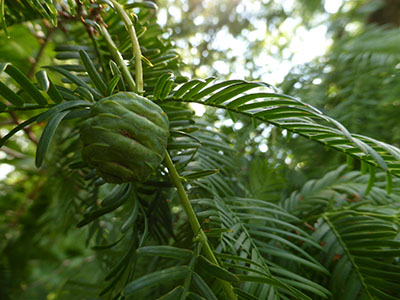
STRUCTURE analysis and principal coordinate analysis revealed that these populations were divided into four groups: the western China group located mainly in the Yunnan-Guizhou Plateau, the central China group located mostly in the Luoxiao Mountains and Nanling Mountains, the eastern China group located in the Wuyi Mountains and the Vietnam group containing two populations in Vietnam. Significant correlation was found between the pairwise genetic differentiation and geographic distance (r = 0.882, p = 0.01), suggesting that genetic differentiation among the populations follows the model of isolation by distance (IBD). The inbreeding index (Fis = 0.176 ± 0.024) indicated that F. Signals of bottleneck events were detected in the populations GXDMS, GXHJ, V-PXB, and V-HB, probably due to Pleistocene glaciations or overexploitation in recent years. hodginsii at the species level (He =0.635), albeit slightly lower than that of its sister species Chamaecyparis obtusa. Based on the profiles of 12 simple sequence repeat (SSR) markers, we observed a high level of genetic diversity in F. hodginsii were sampled from China and Vietnam to characterize its genetic diversity and population differentiation. In this study, a total of 427 individuals of F. Currently, the species is distributed in southern China, northern Vietnam, and northern Laos and listed as a "near threatened" species by the IUCN. glyptostroboides are mainly associated with the production, protection and dispersal of pollen for optimization of wind pollination.įokienia hodginsii is a Tertiary relict conifer of the monotypic genus Fokienia (Cupressaceae s.l.). These results suggest that the structure, morphology, architecture and arrangement of male cones of M.


Subsequently, dehiscence of the microsporangia occurred through rupturing of the microsporangial wall along the dehiscence line. In mid-February, the endothecium and tapetum layers disintegrated, and in the epidermal layer the cell walls were thickened with inner protrusions. The microsporangial wall was composed of an epidermis, endothecium, and tapetum. Each cone consisted of spirally arranged microsporophylls subtended by decussate sterile scales, and each microsporophyll commonly consisted of three microsporangia and a phylloclade. Male cones were initiated from early September and shed pollen in the following February. The male cones were borne oppositely on one-year-old twigs that were mainly located around the outer and sunlit parts of crown. glyptostroboides using semi-thin sections and scanning electron microscopy. In this study, we observed the morphological and anatomical changes that occur during male cone development in M. However, limited information on male cone development in the species is available. Metasequoia glyptostroboides, a famous relic species of conifer that survived in China, has been successfully planted in large numbers across the world.


 0 kommentar(er)
0 kommentar(er)
